
Thinking in the Age of Machines: Global IQ Decline and the Rise of AI-Assisted Thinking
Are our minds adapting—or deteriorating—in the digital age? As global IQ scores decline and artificial intelligence assumes more cognitive tasks, new questions emerge about the future of human thought. From the reversal of the Flynn effect to the rise of “brain rot” in online culture, researchers are examining how technology, media, and shifting environments are subtly reshaping our capacity to think.

Everything Has a Beginning and End, Right? Physicist Says No, With Profound Consequences for Measuring Quantum Interactions
Quantum technologies require measurements of quantum interactions, but is measuring accuracy possible if we can’t pinpoint the beginning and end in chains of cause and effect over time? Physicist Julian Barbour redefines time as an increasing complexity of interactions, when one arrow of time from the past splits at a “Janus point” into two arrows for the future. Could identifying the Janus point help to resolve the problem of circuit decoherence that has held back full-scale quantum computing?
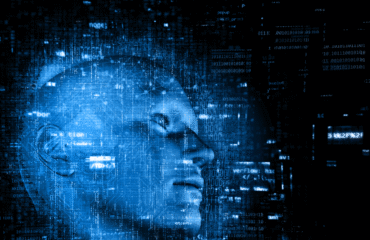
Cleaning the Mirror: Increasing Concerns Over Data Quality, Distortion, and Decision-Making
As AI systems become more powerful, the spotlight often focuses on models—yet the real bottleneck may lie in the data they consume. From flawed training sets to recursive feedback loops of AI-generated content, recent studies reveal that data quality is not just a technical detail—it’s a foundational concern for the future of trustworthy machine intelligence, especially in crucial functions like healthcare.

Not a Straight Line: What Ancient DNA Is Teaching Us About Migration, Contact, and Being Human
What if human evolution wasn’t a journey progressing in a straight line, but a web of failed alliances, fragmented lineages, and long silences? From Neanderthal isolation in Europe to unexpected genetic bridges across the Pacific, ancient DNA is unraveling the myth of a single evolutionary path. What does our history as a species say about the world we’re building now?
Editorial Perspectives
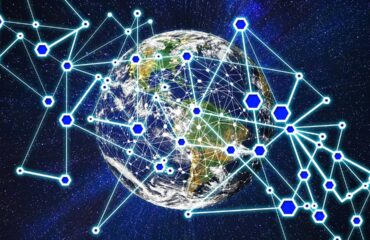 |
Blog
|
Blog
The Corruption of Four-Dimensional Humanity with Two-Dimensional Technology
Words and images on two-dimensional screens can create a powerful fantasy world, but one that's far removed from the complexity of four-dimensional human living. A social media broadcaster like the world's wealthiest human can be oblivious to the effects on vulnerable adults and children from offers of million dollar payments to voters, "free speech," and threats of termination targeting 2.3 million government workers. Social media's catastrophic failure is that it doesn’t allow us to see when we’re being bad in the eyes of others.
 |
Blog
|
Blog
An Urgent Appeal for Separation of Tech and State
For the same principles and benefits that separation of church and state brought to democracies, the power of giant tech companies and their leaders must be kept separate from government. The power of the people, which is the constitutional goal of democracies whether it's practised or not, deserves no less. Tech and state must disentangle, if the people are to have any hope of remaining technology's masters. The alternative, if we cede control to our technological creations, is unconscionable.
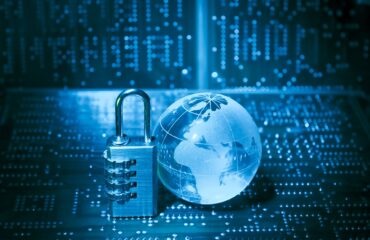 |
Blog
|
Blog
Protecting Sensitive Financial Information From Data Brokers is a Crucial Government Responsibility
The U.S. Consumer Financial Protection Bureau is at risk of being eliminated, along with its proposals to bring data brokers under the same rules that govern credit bureaus. Relaxing financial regulations exposes consumers to risks from the buying and selling of their sensitive financial data, including fraud and blackmail by bad actors. To safeguard consumers and prevent a repeat of the 2008 financial collapse, government's role in financial regulation is crucial.
In Focus

Digital Sovereignty: Cutting Dependence on Dominant Tech Companies
As cloud computing becomes the backbone for everyone, from governments to businesses to schools to individuals, a handful of Big Tech companies are tightening their grip on global infrastructure. This article explores what digital sovereignty means, why it’s increasingly urgent, and how nations and individuals are fighting to reclaim control over their data and systems.

New Ways of Measuring Time Increase Precision and Technological Potential
For nearly 50 years, a second of time has been defined as 9,192,631,770 cycles of light energy emitted by a caesium atom. While new methods of gauging light frequencies in cascades of caesium atoms promise greater accuracy from atomic clocks, more accurate still would be optical clocks now under consideration with potentially profound consequences for technologies that rely on precision measurement.

Decoding Ancient Technology Using Modern Technology
From the discovery of a 500-year-old ocean-going canoe in the Chatham Islands to the AI-powered decoding of ancient Roman scrolls buried in volcanic ash, modern technologies—like radiocarbon dating, CT scanning, and AI—are transforming the study of ancient artefacts. Mysteries endure, however, like the undeciphered Voynich Manuscript, and continue to challenge our understanding of the past.
Podcasts and Webcasts
The Fascinating World of Mathematics at the Fields Institute, with Dr. Deirdre Haskell
Keeping Humans in the Loop: a Discussion with Saima Fancy
Election Monitoring in the Technological Era, with Dr. Ian Batista
The Quantum Record is a non-profit journal of philosophy, science, technology, and time.
The potential of the future is in the human mind and heart, and in the common ground that we all share on the road to tomorrow. Promoting reflection, discussion, and imagination, The Quantum Record highlights the good work of good people and aims to join many perspectives in shaping the best possible time to come.
We would love to stay in touch and add your voice to the dialogue. Add your name and email below to be notified of updates to the publication:
Latest Quantum Computing

Everything Has a Beginning and End, Right? Physicist Says No, With Profound Consequences for Measuring Quantum Interactions
Quantum technologies require measurements of quantum interactions, but is measuring accuracy possible if we can’t pinpoint the beginning and end in chains of cause and effect over time? Physicist Julian Barbour redefines time as an increasing complexity of interactions, when one arrow of time from the past splits at a “Janus point” into two arrows for the future. Could identifying the Janus point help to resolve the problem of circuit decoherence that has held back full-scale quantum computing?

Does Time Flow in Two Directions? Science Explores the Possibility—and its Stunning Implications
A new proof shows that time could move in opposite directions, both backward and forward like a pendulum, and equations of physics would work the same either way. Are there two arrows of time, not just the one that we experience moving from past to future? The mathematics of a two-arrow time flow describing both the original and end states of a quantum system could provide a solution for the problem of decoherence in fragile quantum circuits.
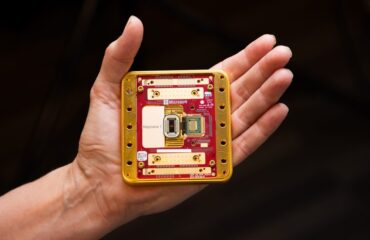
Breakthroughs in Teleportation and Topological Qubits Bring Quantum Computing Closer to Reality
Microsoft’s new Majorana 1 topological quantum bit opens the potential for a new and efficient form of quantum computing memory. Storing signals in the shape of qubits could significantly reduce decoherence and increase quantum circuit stability, as new developments in teleportation hold the potential for networking quantum computers to multiply the power of error-free operation.
Featured Science News

Will We Find a Universal Memory for All Physical Scales, From the Tiny Quantum to Giant Stars, in the Geometry of Curves?
In the continuing search for a theory unifying general relativity’s gravity with quantum mechanics, evidence suggests the universe retains a record of events in the geometry of curves that preserve the gravitational consequences of interactions from the tiny quantum to massive stars. We survey 30 years of discoveries pointing to the possibility of decoding probabilities at any scale.
Latest Philosophy of Technology

Thinking in the Age of Machines: Global IQ Decline and the Rise of AI-Assisted Thinking
Are our minds adapting—or deteriorating—in the digital age? As global IQ scores decline and artificial intelligence assumes more cognitive tasks, new questions emerge about the future of human thought. From the reversal of the Flynn effect to the rise of “brain rot” in online culture, researchers are examining how technology, media, and shifting environments are subtly reshaping our capacity to think.

Digital Sovereignty: Cutting Dependence on Dominant Tech Companies
As cloud computing becomes the backbone for everyone, from governments to businesses to schools to individuals, a handful of Big Tech companies are tightening their grip on global infrastructure. This article explores what digital sovereignty means, why it’s increasingly urgent, and how nations and individuals are fighting to reclaim control over their data and systems.

Who Will Control the Rights to Life-Saving AI-Generated Proteins?
Businesses like Google DeepMind are making tremendous advances in the precision measurement and sequencing of protein folding, as differences in the shape of proteins and the amino acids they’re made of give each type its unique properties. When proteins are the basis of our human bodies and other biological mechanisms, who will control the benefits that new proteins could provide for medicine and many other applications? The question is more urgent as AI’s power increases, advancing from protein measurement to protein manufacturing.
Latest Technology Over Time

Decoding Ancient Technology Using Modern Technology
From the discovery of a 500-year-old ocean-going canoe in the Chatham Islands to the AI-powered decoding of ancient Roman scrolls buried in volcanic ash, modern technologies—like radiocarbon dating, CT scanning, and AI—are transforming the study of ancient artefacts. Mysteries endure, however, like the undeciphered Voynich Manuscript, and continue to challenge our understanding of the past.

The Fascinating History of the Computer, from ENIAC, Vacuum Tubes and Transistors, to Microchips
We trace computing history from ENIAC, the first computer in 1947, from vacuum tubes to transistors, to the development of microchips that put far greater computing power in our our phones than the giant ENIAC had. With the world at the brink of a quantum computing revolution, what lessons can we draw from our computing history to shape the best possible future with our next technological leap ?

Ancient Roman Concrete: A Technology Ahead of Its Time
The Colosseum and Pantheon stand witness to the knowledge and skill behind ancient Roman concrete-making technology. We look at the history of concrete from then to now, and take you into the Pantheon to explore the marvels that ancient Romans accomplished with concrete.
Latest Science News

Cleaning the Mirror: Increasing Concerns Over Data Quality, Distortion, and Decision-Making
As AI systems become more powerful, the spotlight often focuses on models—yet the real bottleneck may lie in the data they consume. From flawed training sets to recursive feedback loops of AI-generated content, recent studies reveal that data quality is not just a technical detail—it’s a foundational concern for the future of trustworthy machine intelligence, especially in crucial functions like healthcare.

Not a Straight Line: What Ancient DNA Is Teaching Us About Migration, Contact, and Being Human
What if human evolution wasn’t a journey progressing in a straight line, but a web of failed alliances, fragmented lineages, and long silences? From Neanderthal isolation in Europe to unexpected genetic bridges across the Pacific, ancient DNA is unraveling the myth of a single evolutionary path. What does our history as a species say about the world we’re building now?
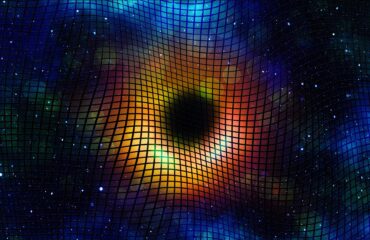
Do We Live Inside a Black Hole? New Evidence Could Redefine Distance and Time
What difference would it make if we knew that we’re living inside a black hole? New evidence of galactic rotation patterns suggests that we do, and that we should reconsider how we measure distance and time. Is time linear, on a one-way trip from past to future, or is time actually circular? Evidence that galaxies rotate on a universal axis revives black hole cosmology and shockwave cosmology theories first proposed decades ago.
